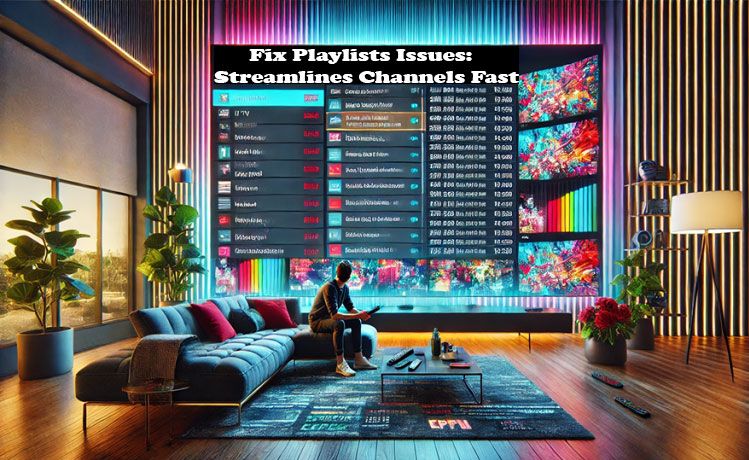Understanding Device Memory and Storage Constraints
Managing device storage has become a balancing act. As devices pack more functionality, their memory often runs out faster than we expect. Here’s why.
Why Devices Have Limited Memory
Hardware Limitations
Your device’s memory capacity is determined by its physical components. Whether it’s a smartphone, tablet, or streaming box, there’s a hard limit to the storage it can offer. Hardware you need for watching IPTV
Software and System Storage Usage
A chunk of your device’s memory is always reserved for the operating system and pre-installed applications. This leaves less room for your personal data, playlists, or apps. Softwares you need for watching IPTV
The Impact of Limited Memory on App Performance
When a device’s memory is stretched thin, apps slow down, crashes become frequent, and basic functions can stall.

Managing Large Playlists on Devices
Music lovers often face a common issue—playlists that refuse to save due to size. Let’s dive into the reasons and solutions.
Why Large Playlists Fail to Save
Memory Overload Due to Playlist Size
Each song in a playlist consumes memory. If the combined size of the songs exceeds the device’s available memory, saving it becomes impossible.
System Restrictions on Playlist Storage
Some systems impose limits on playlist size, not by memory but by the number of entries.
Optimizing Your Playlist for Limited Storage
Reduce the Number of Songs
Focus on your favorite tracks and remove duplicates or songs you rarely listen to.
Use Compressed File Formats
Choose compressed formats like MP3 instead of lossless formats like FLAC to save space without a noticeable drop in audio quality.
Top Recommendation:
Discover the ultimate entertainment solution with 7 Days GenIPTVPro Subscription, designed just for you.
Troubleshooting Channel Problems
Channel management on devices like TVs or streaming boxes can become a hassle when lists grow unwieldy. Here’s how to tackle this.
Understanding Channel List Issues
How Channel Lists Can Overload Devices
Large channel lists take up valuable memory, especially if they include unnecessary channel groups.
Symptoms of an Overloaded Channel List
Slow channel switching, freezing screens, or even system crashes are all signs of an overloaded channel list.
Best Practices to Manage Channel Lists
Shorten the Channel List
Prioritize the channels you watch and remove the rest.
Disable Unnecessary Channel Groups
Turn off channel groups you rarely use. Most systems let you manage these in settings.
Practical Tips to Maximize Device Efficiency
To get the most out of your device, regular maintenance is key.
Regularly Clear Cache and Unnecessary Files
Temporary files and app caches can accumulate over time. Clearing them frees up memory.
Use Cloud Storage for Large Files
Cloud solutions like Google Drive or iCloud allow you to offload files, reducing strain on your device’s internal memory.
Regular Device Maintenance
Update software, delete unused apps, and restart your device periodically for smoother performance.
Conclusion
Effective device management ensures smoother operation and fewer headaches. Whether it’s managing playlists or troubleshooting channel issues, these tips can help you avoid common pitfalls.
FAQs
- Why does my playlist fail to save on my device?
It’s likely too large for the available memory or exceeds the system’s entry limit. - How can I reduce the size of my playlist?
Remove songs you rarely listen to and consider using compressed audio formats. - What should I do if my device’s memory is full?
Clear cache, delete unnecessary files, and consider using cloud storage. - Why is my device struggling with channel lists?
Overloaded channel lists consume memory, slowing down the device. - How can cloud storage help with memory issues?
It offloads large files, freeing up internal storage for apps and essential data.
